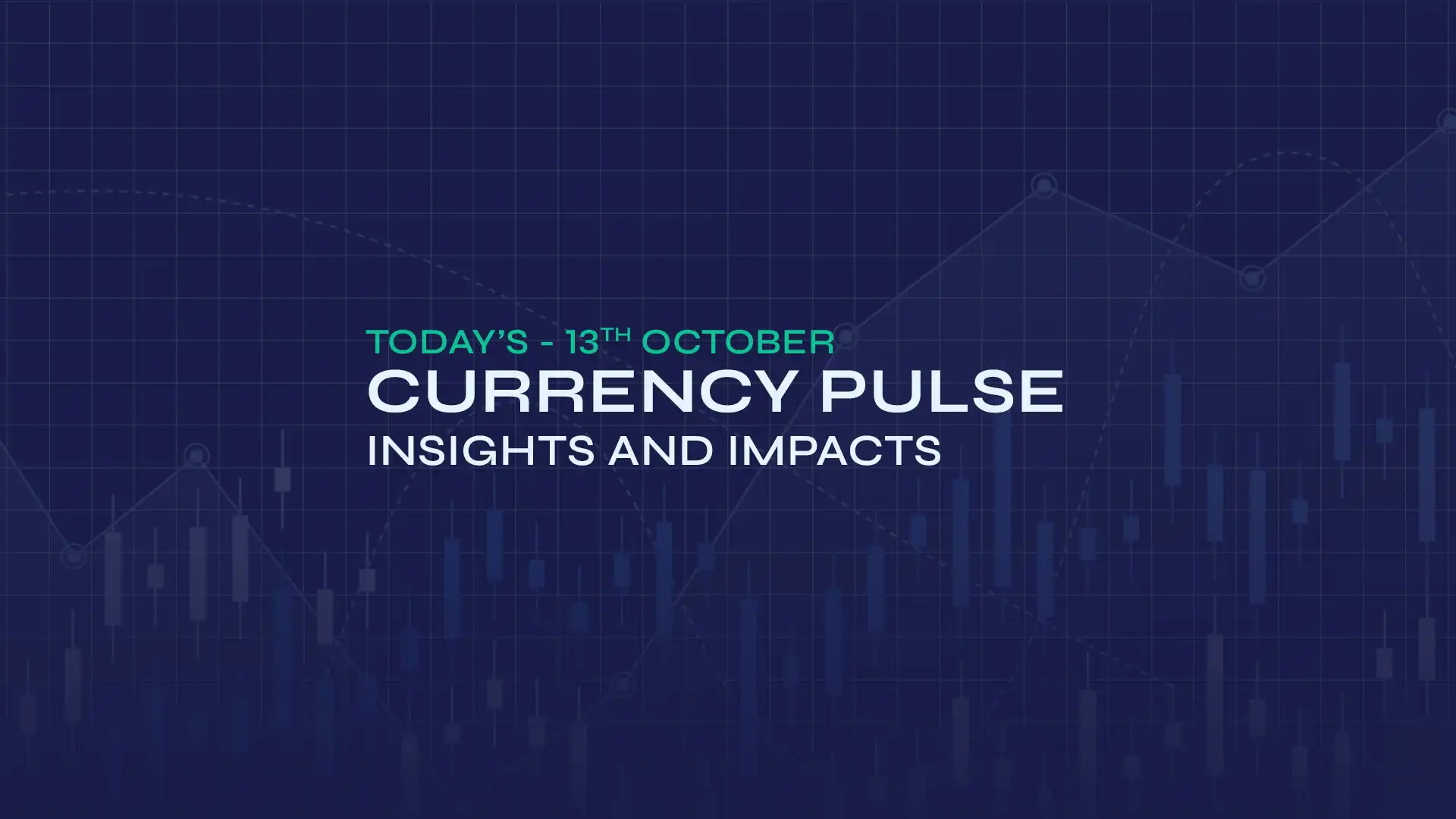The EUR/USD pair traded slightly higher near 1.1570[1] in Tuesday's Asian session, recovering part of previous 0.5% decline. The rebound of the euro is believed to be due to a wary market mood before the key euro zone data, including Germany's final September Harmonized Index of Consumer Prices (HICP)[2], which will offer insights into the trend of inflation and business confidence in the region.
Market commentators[3] note that the euro had been pressured in the market in the previous case, with political uncertainty in France crushing investor sentiment. The reappointment of Sebastien Lecornu to the role of Prime Minister by President Emmanuel Macron[4] has not helped and opposition leaders Marine Le Pen and Eric Ciotti have put forward a no-confidence motion that risks undermining the new government. These political risks have constrained the potential of the common currency in the short term in terms of upside.
Market commentators[5] point out that the US dollar is subdued under the weight of increased expectations of further Federal Reserve (Fed) rate cuts by year-end. The CME FedWatch Tool shows that markets are currently factoring in a 97% chance of an October rate cut and more than 90% chance of one in December. The dovish outlook is further reinforced by comments made by Philadelphia Fed President Anna Paulson[6], which pointed to increasing labour market risks and declining inflationary pressures due to trade tariffs.
Analysts[7] indicate that the wider feeling of the greenback is weak in the face of fears of the current shutdown of the US government system, which is disrupting paychecks and government services. The blowback may undermine future US retail sales and industrial production data[8], potentially putting a cap on the dollar recovery. Although short-term risks are biased towards mild euro support over 1.1550, long-term gains are minimal unless economic indicators in the eurozone depict resilience.
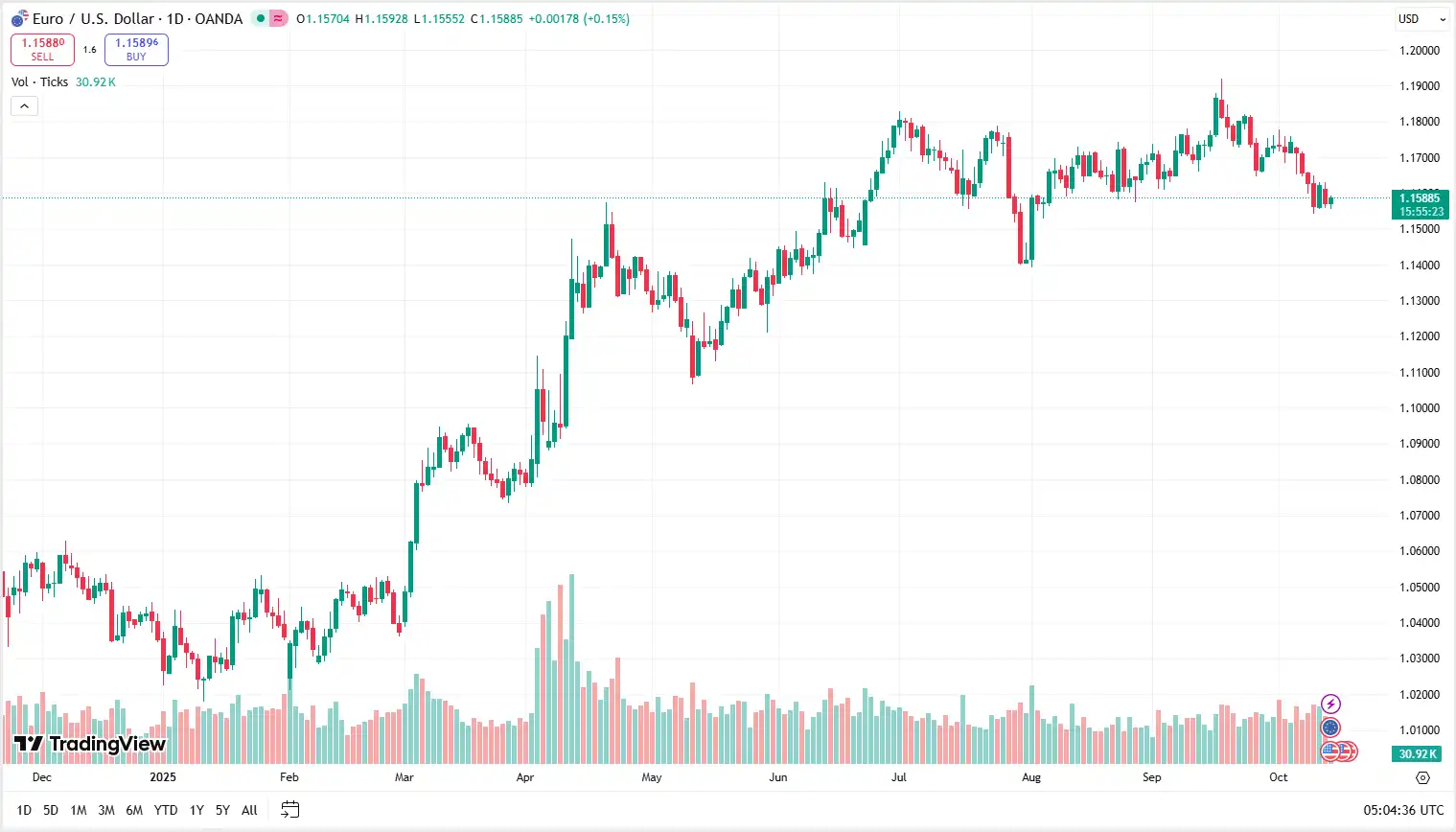
AUD/USD Extends Losses Amid Persistent Bearish Momentum
The AUD/USD pair traded near 0.6510[9] in Tuesday's early trading hours. Market reports indicate that, in the daily chart, the duo has remained in a downward channel trend highlighting an existing bearish inclination. The 14 days Relative Strength Index (RSI)[10] is lower than the neutral 50 value which supports the negative momentum. The channel supports the immediate decline at the lower boundary of this channel at around 0.6460 and a decline below that may likely lead to the four months low of 0.6414 and even the five months trough of 0.6372.
Market commentators[11] point out that there is still minimal upside recovery with the first initial resistance at the nine day EMA of 0.6546 and the 50 day EMA being around 0.6556. An extended break above these might lead to a challenge of the upper limit of the channel to 0.6600, and additional strength may get to the September high of 0.6707. But the general mood stays wary, and short term gains might probably be subjected to selling unless there is definite move beyond trend resistance.
Market reports[12] indicate that the minutes of the September meeting by the RBA pointed out the ongoing economic fragility, with the policymakers reporting weak consumption and weakening labour conditions. The central bank[13] reiterated its data-related and cautious position, as it became evident that inflation may remain high as late as Q3. Meanwhile, expectations of consumer inflation[14] also increased to 4.8% in October which puts pressure on policymakers to be careful of price persistence.
Market commentators[15] note that the focus shifts to the next US retail sales and industrial production reports, which may have an impact on the future US dollar dynamics. US weaker numbers can limit additional dollar appreciation and provide a short-term upward boost to the AUD/USD[16] pair. However, the risks are again biased against the downside in the medium term, with global growth factors and the RBA being wary to constrain the recovery potential of the Australian dollar[17].
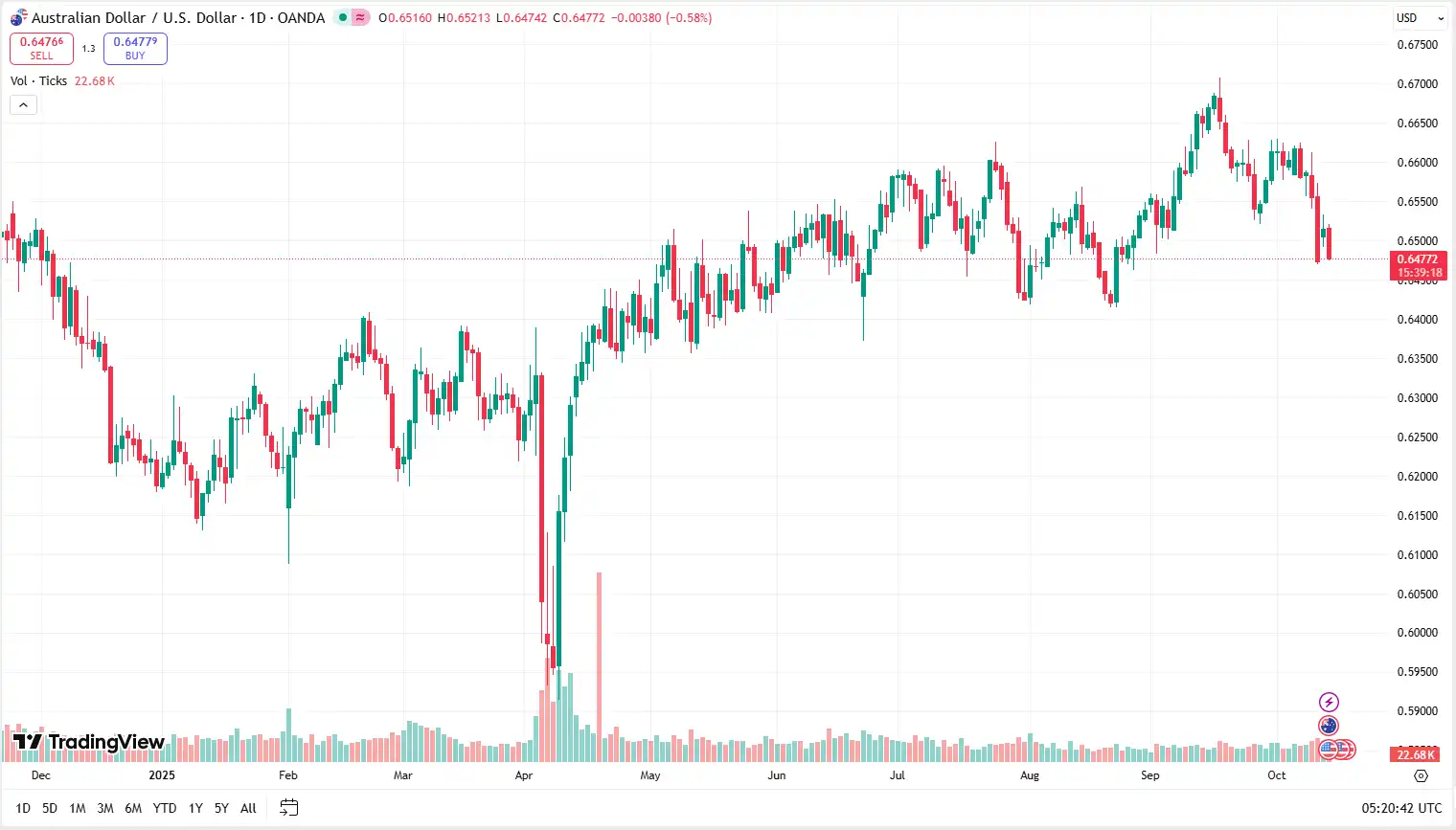
USD/CAD Extends Rally Amid Cautious Fed Outlook
The USD/CAD pair extended its upward momentum and traded around 1.4043[18] in Tuesday's Asian session, for the second consecutive session, touching a fresh six-month high. The pair is believed to have been supported by wide-ranging US dollar strength on the basis of safe-haven demand, but profits are thought to be limited as investors await Fed Chair Jerome Powell’s[19] next utterances at today’s scheduled National Association of Business Economics (NABE) Annual Meeting today. The traders are keenly looking at any signs regarding the policy path following the recent indications of dovish recalibration by the Fed.
Market commentators[20] point out that market sentiment shows that the US dollar might experience a new wave of selling pressure as rate cut expectations pick up ground. According to the CME FedWatch Tool, markets are anticipating a near 97% probability of a rate cut in October and a 92% probabilistic future of a second rate cut in December. Analysts[21] indicate that this opinion was reinforced by the words of the Philadelphia Fed President Anna Paulson, who stated that due to increasing risks in the labour market, further easing is justified. These events together with trepidation about the economic repercussions of the current US government shutdown[22] might be placing a burden on the US growth prospects and dulling the recent gain of the US dollar.
Market reports[23] indicate that in the Canadian market, Loonie has been attracted moderately after better-than-foreseen employment results, which made the markets reduce their anticipations of a probable bank of Canada (BoC) rate cut in the near future. Recent pricing indicates a 50%[24] likelihood of a reduction during the October 29 policy meeting, a significant reduction of 72% previously. This stable data base gives an offset to the US dollar hegemony.
Analysts[25] indicate that the focus in the next few days would shift to future economic releases in the US such as retail sales and industrial production data, which potentially would provide a further understanding of resiliency in the domestic economy. Although short term momentum gives the USD/CAD bulls an upper hand above the 1.40[26] mark, the long term upside could be tested when weak US data or weak fed guidance reignites the selling pressure on the greenback.
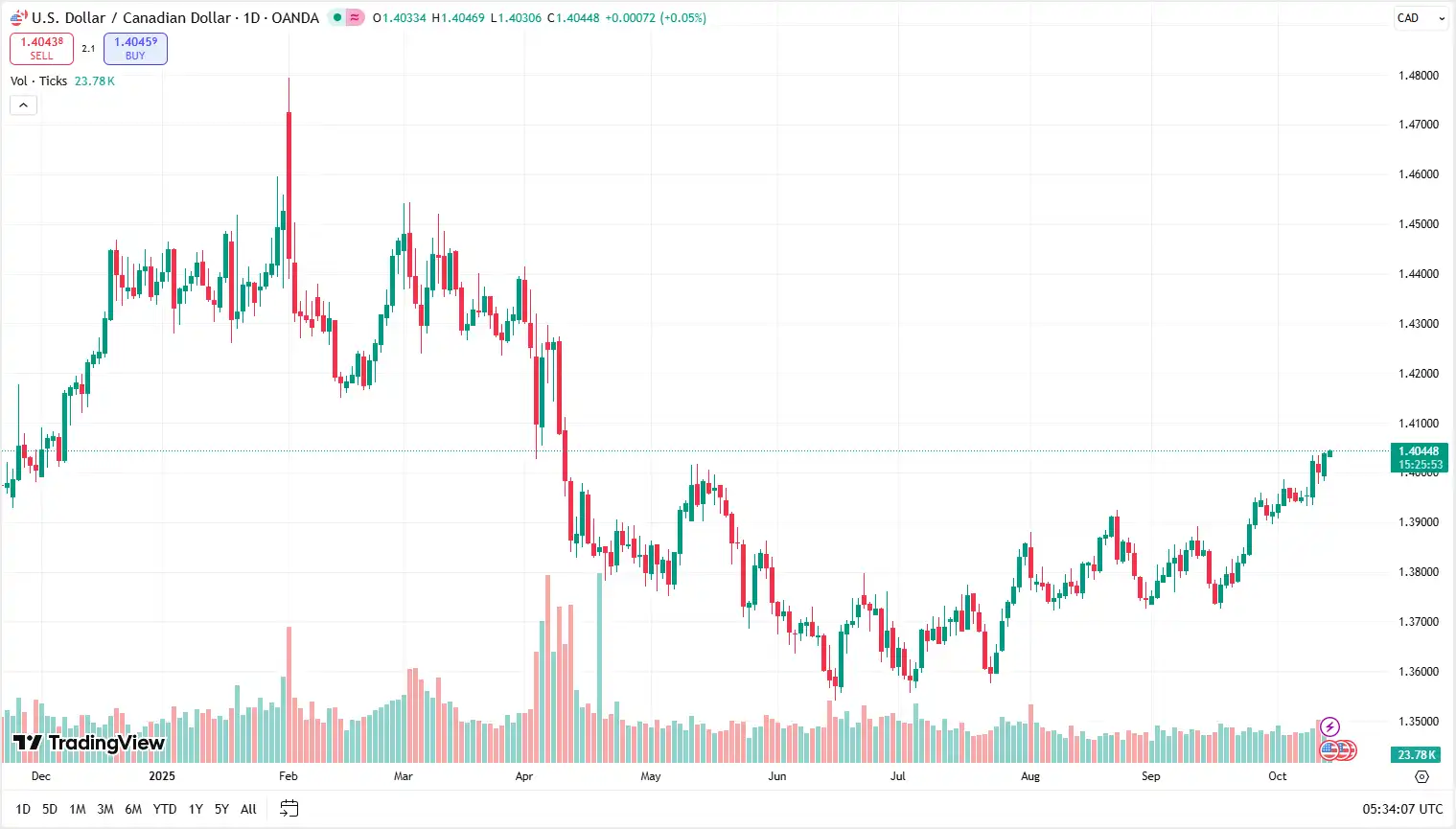
EUR/GBP Retreats as Political Uncertainty Weighs
The EUR/GBP pair recovered and traded around 0.8707[27] in Tuesday's earlier trading hours before retreating below the 0.8700 handle amid a cautious risk environment. It is believed that even though it has been below session lows of 0.8685, the momentum is weak because the euro[28] has been put back into selling pressures throughout the board. Short-term technical indicators show a strong resistance at 0.8710, with the first level of support at 0.8680, then the October floor stands at 0.8655.
Market reports[29] indicate political uncertainty in France is one of the major factors contributing to the euro weakness. The move by President Emmanuel Macron[30] to re-nominate Sebastian Lecornu as Prime Minister and Roland Lescure as Finance Minister, which is in effect a reinstatement of a short-lived previous cabinet, has not helped rebuild investor confidence. Markets are cautious of the government[31] capacity to implement fiscal laws with a highly divided parliament, which curbs euro positions in the short-term.
Meanwhile, the general risk sentiment is being pulled down by the growing tension between the US and China[32] over trade, although there were some positive signs in the Gaza peace front. Market reports[33] indicate that the Chinese government has threatened retaliation with planned US tariffs, putting a drag on the mood of global growth and further fuelling defensive flows against sterling and the dollar. The euro has been especially vulnerable to this global uncertainty due to its correlation with risk assets.
Analysts[34] note that the focus will shift to US retail sales and industrial production data later in this week, with lower than expected figures likely to support further anticipation of previous Fed rate cuts. As softer US data can indirectly limit the strength of the dollar in support of the euro, the future of the pound is pegged on the UK employment data, which comes on Tuesday, and the speech of BoE Governor Bailey[35] that may affirm the cautious tone of the Bank. Analysts[36] indicate that EUR/GBP might be supported at the 0.8680 level, whereas the medium term risks will be one-sided downward due to the political weakness and negative cross-market factors.
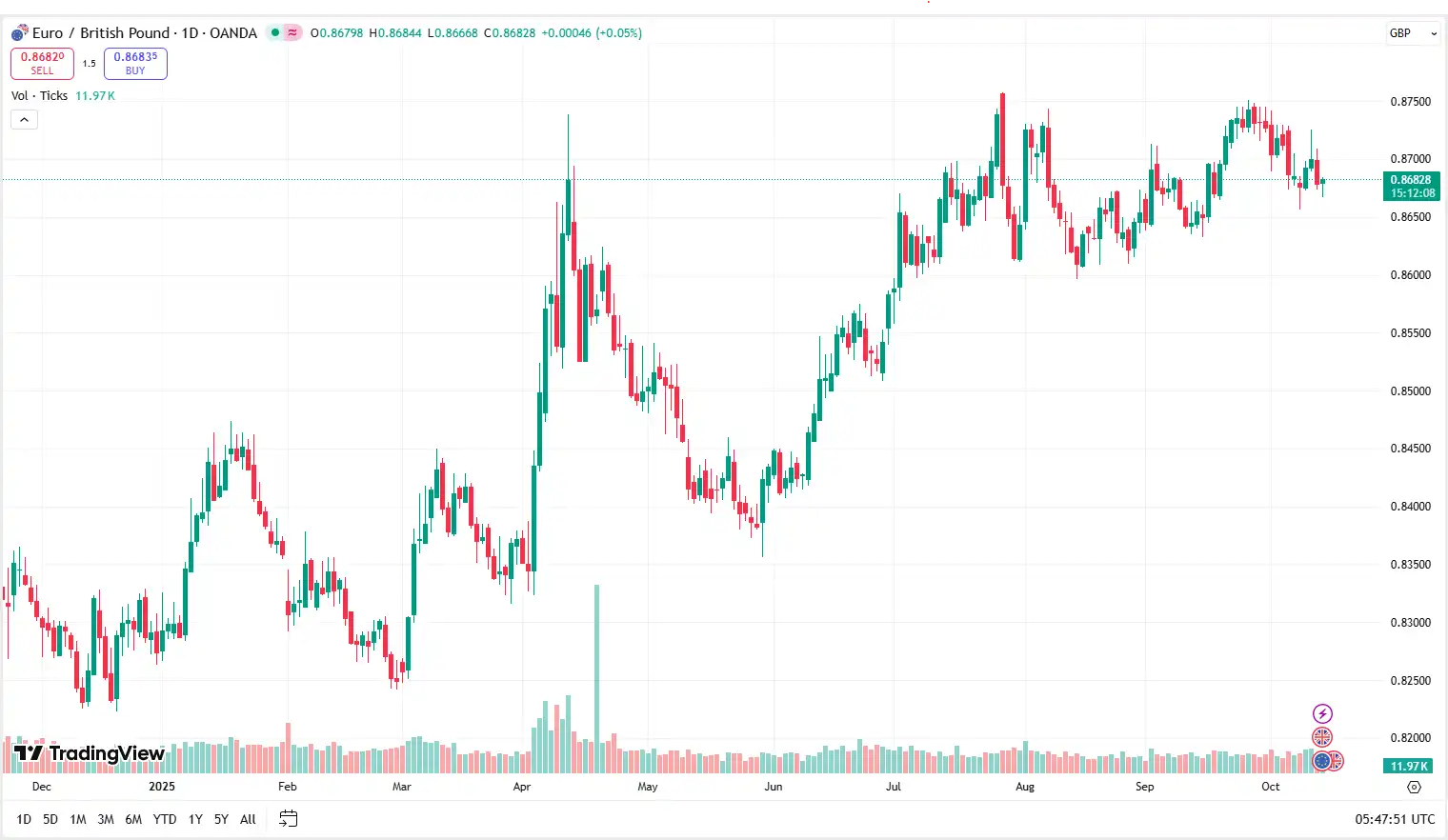
Stay Ahead in the Currency Game
Whether you're a daily FX trader or handle international transactions regularly, our 'Currency Pulse' newsletter delivers the news you need to make more informed decisions. Receive concise updates and in-depth insights directly in your LinkedIn feed.
Subscribe to 'Currency Pulse' now and never miss a beat in the currency markets!
Ready to act on today’s insights? Get a free quote or give us a call on: +44 (0)20 7740 0000 to connect with a dedicated portfolio manager for tailored support.
Important Disclaimer: This blog is for informational purposes only and should not be considered financial advice. Currency Solutions does not take into account the investment objectives, financial situation, or specific needs of any individual readers. We do not endorse or recommend any specific financial strategies, products, or services mentioned in this content. All information is provided “as is” without any representations or warranties, express or implied, regarding its accuracy, completeness, or timeliness.



